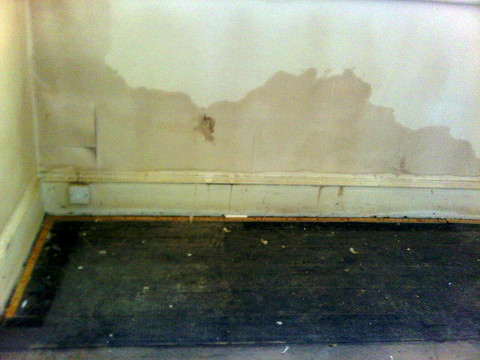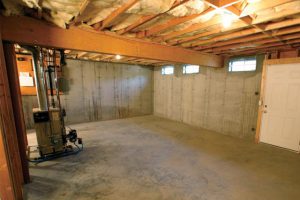Rising damp in buildings occurs when water from the ground risis up through the bricks and mortar of a building by capillary action. Simply put, the water rushes up in the building the same way that a sponge sucks up water.
Any masonry structure that is unprotected by a properly installed damp proof course (DPC) is susceptible to natural rising damp. Damp rises by capillary action through the pores of the masonry, seeking a way to evaporate.
The moisture will continue to rise until it reaches a height where, unless no evaporation is possible, gravity takes over and pulls it back down. This height is seldom more than 1.2m, but deposits of salt may be found higher in wall, often spreading by the use of non-breathing plasters, renders, paints or vinyl wall papers.
What are the signs of rising damp?
The typical signs of rising damp rather than other damp problems is a line of yellowish or brownish staining or brown plaster in the lower area of your wall above your skirting boards, peeling wallpaper and possible white efflorescent salts which was drawn out of the brickwork.
What causes rising damp?
All buildings that are surrounded by natural moisture that is trying to get into the dry structure of a building. Materials such as stone and brick are naturally porous and they will soak up moisture if you do not damp proof your property.
These are some of the common problems that cause rising damp:
- A damaged damp proof course or the damp proof course no longer copes with changing conditions.
- Inadequate sub-floor ventilation: the lack of ventilation in the sub-floor results in a build up of humidity and only minimal evaporation from the soil and base walls occur.
- Sub-floor obstructions: any debris in the sub-floor can obstruct the flow of ventilation and it may contribute to dampness by bridging the damp proof course.
- Poor draining and/or damaged guttering and pipes: Water may be directed underneath your house if you have poor drainage and built up garden beds and sloping grounds. If storm water pipes, gutters, roofs or down pipes are damaged, this can cause excessive leaking which can also cause dampness problems.
What potential problems can rising damp cause?
Rising damp is unsightly, potentially unhealthy, often leads to timber decay in older properties and it causes heat loss due to the increased conductivity of the walls. There are also numerous other problems such as:
- Wet walls
- Peeling paint or wallpaper
- Bulging plaster
- Structural damage
- Salt efflorescence
- Mold
Health problems related to rising damp.
Rising damp ultimately leads to mould in your home and mould itself can cause numerous health problems. Some health implications include:
- Eye irritation, leading to inflammation or watery eyes.
- Coughing.
- Asthma attacks or even the onset of asthma.
- Respiratory problems due to inhaling mold spores.
When rising damp does occur, your best choice would be to contact a company that specializes in damp proofing. Rising damp can lead to serious structural damage and health problems if you leave it alone.


